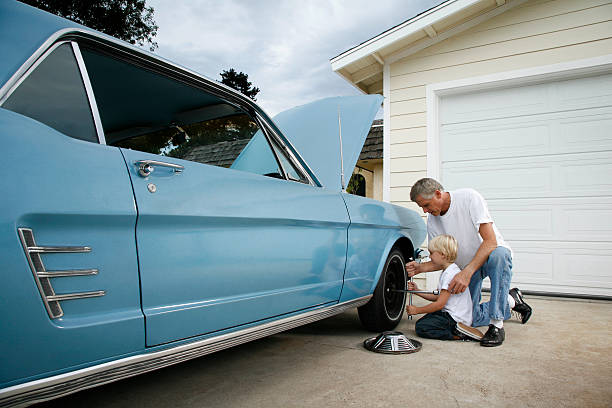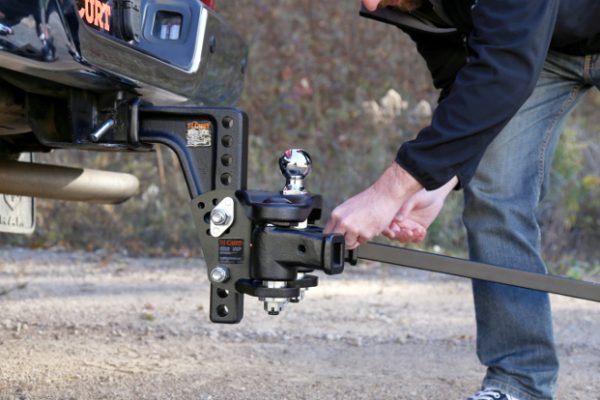Your garage holds a hidden gem—a vintage car waiting to be brought back to life. Whether it’s a family heirloom or a project you’ve always dreamed of, restoring an old car can be a deeply rewarding experience.
Assess the Project
Take your time during this part to make sure you understand how much needs to be done and what you’ll want to do to get it all working again.
- Determine the Scope: Before diving into restoration, assess the project’s scope. Determine whether you want a full frame-off restoration, a partial restoration, or just a functional revival. This initial decision will guide your entire project.
- Budget Wisely: Set a realistic budget. Factor in not just the cost of parts but also tools, equipment, and professional help if necessary. Being financially prepared ensures that your project stays on track. Visit places like sircarpart.com to get an idea of what parts will cost.
- Research and Documentation: Gather as much information about your car’s make, model, and year as possible. Research manuals, forums, and restoration guides specific to your vehicle to understand its unique quirks and needs.
Strip Down and Inspect
Take the vehicle apart and start working on everything to get it going again. You’ll want to go through every component to make sure it’s in working condition.
- Safety First: Safety is paramount when working on cars. Invest in personal protective equipment like gloves, goggles, and a respirator to shield yourself from dust, chemicals, and sharp edges.
- Strip Down the Car: Begin by removing all components from the car, documenting and labeling everything meticulously. This step will help you keep track of parts, making reassembly smoother.
- Inspect Thoroughly: Carefully examine the car’s frame, chassis, body, and engine. Create a detailed list of what needs repair or replacement, ranking items by priority.
Mechanical Restoration
Start with the mechanics. You’ll want everything to work properly to help keep you safe on the road when it’s ready to drive.
- Engine Rebuild: If your car’s engine needs attention, consider a complete rebuild. Replace worn-out parts, resurface cylinder heads, and ensure proper timing and tuning. Upgrading to modern components can enhance performance and reliability.
- Transmission and Drivetrain: Inspect and overhaul the transmission and drivetrain components. Replace worn-out clutches, gears, and universal joints. Upgrading to a more modern transmission can improve fuel efficiency and drivability.
- Suspension and Brakes: Replace or rebuild suspension components and the braking system. Ensure proper alignment and balancing for a smoother ride and safer stopping power.
- Electrical System: Rewire the electrical system, replacing worn-out wiring and connectors. Consider upgrading to a more reliable and modern wiring harness for better functionality.
Bodywork and Paint
Making it look amazing is a fun part of the process. Take some time to think about what you’d like the exterior to look like.
- Rust Removal: Address rust issues promptly. Sandblast or chemically treat rusted areas and replace any panels or sections beyond repair.
- Body Straightening: Straighten the body and frame, ensuring proper alignment. Use body filler as needed to smooth out imperfections.
- Priming and Painting: Apply several layers of primer, allowing each to dry before sanding. Choose a high-quality paint job that suits your car’s era and style. A well-done paint job can transform the car’s appearance.
Interior Restoration
Consider the interior just as carefully. There can be a lot that will impact the overall look of your project.
- Upholstery: Replace worn-out or torn upholstery with period-correct materials. Pay attention to seat cushions, headliners, and carpets for a complete interior overhaul.
- Dashboard and Gauges: Restore or replace dashboard components, gauges, and switches. Ensure proper functionality and a polished appearance.
- Soundproofing and Insulation: Enhance the interior’s comfort by adding soundproofing materials and insulation. This step can significantly reduce road noise and improve the driving experience.
Reassembly and Fine-Tuning
Get everything put back together and ready to drive. Make sure it’s tested carefully before relying on it to run.
- Methodical Reassembly: Reassemble the car systematically, referring to your documentation. Double-check all connections and fasteners to avoid potential issues down the road.
- Fluids and Lubrication: Fill all fluids, such as oil, coolant, and brake fluid. Lubricate moving parts as needed to ensure smooth operation.
- Test and Tune: After reassembly, conduct thorough testing and tuning. Address any issues promptly to achieve optimal performance and safety.
Finishing Touches
Complete any last-minute finishing touches to perfect the vehicle.
- Detailing: Give your car a thorough cleaning and detailing. Wax the exterior and clean the interior to make it shine.
- Emblems and Trim: Reattach or replace emblems and trim pieces. These small details can significantly enhance your car’s overall look.
- Customization: If desired, add personal touches like custom wheels, exhaust systems, or modern audio systems while respecting the car’s era and style.
Tips to Keep in Mind
Restoring a vehicle is a rewarding but challenging endeavor that requires careful planning and execution. Keep the following in mind as you begin the restoration.
- Clear Goals: Define your objectives for the restoration. Are you aiming for a showroom-quality finish, or do you prefer a more personalized, custom look? Having clear goals will guide your decisions throughout the project.
- Research: Thoroughly research the make and model of your vehicle. Understand its history, original specifications, and common issues. Access to accurate information will be invaluable during the restoration process.
- Safety: Always keep safety in mind while working on the vehicle. Use proper safety equipment, work in a well-ventilated area, and take precautions when working with hazardous materials or heavy machinery.
- Parts Sourcing: Identify sources for replacement parts and materials. Availability of original or aftermarket parts can vary widely, so plan ahead to avoid delays.
- Quality vs. Cost: Strive for quality in your work, but be mindful of cost-effectiveness.
- Patience and Perseverance: Restorations often encounter unexpected challenges. Stay patient and persistent, and don’t be discouraged by setbacks.
- Enjoy the Process: Vehicle restoration should be an enjoyable and fulfilling experience.
Restoring an old car in your garage is a labor of love, but the satisfaction of bringing a classic back to life is unparalleled. Remember to take your time, stay organized, and seek professional help when necessary. With patience and dedication, you can transform that old car into a masterpiece that turns heads and preserves automotive history for generations to come.





